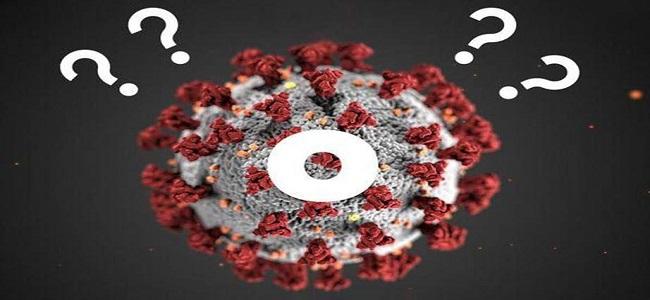Omicron Wave Receding, What Next?

As predicted, Omicron is sweeping across the country. India is yet to peak in the number of daily cases as the wave spreads into hinterlands, even as certain metros like Mumbai and Delhi appear to have peaked. Fortunately, our healthcare system is not overwhelmed so far.
The credit for our ability to absorb the current wave despite its ferocity goes to multiple factors. The previous two waves have imparted natural immunity in a sizeable population. While the protective neutralizing antibody response may be waning after 6 months, the T cell immunity may still offer protection against moderate to severe disease. A sizeable proportion of eligible population has received the mandated two doses of vaccines. Hence, vaccines and prior infection (asymptomatic or symptomatic) are contributing to the milder clinical behavior of COVID-19. It is also possible that Omicron, due to its multiple mutations, is not able to penetrate lung parenchyma as delta and earlier variants could. Cell-culture and animal experiments allude to the above hypothesis. Is it because people have learnt to be responsible in their behaviors? This is less likely given the social, political, and religious gatherings that we have been witnessing. Crowds gathered for the Sankranti festival is a testimony to the fact that people’s memory continues to be short says Dr Krishna Reddy Nallamalla President, InOrder
South Asia Regional Director, ACCESS Health International.
Assuming that the country absorbs the current wave, can we hope to come back to pre-Covid normalcy? As Omicron multiplies in millions of people across the world, and delta and other variants may be surviving in immune-compromised individuals, or some of the earlier variants are multiplying in other animals, we should expect the new variants to emerge until we reach a stage where the virus does not have enough hosts to multiply. How should we prepare for that scenario?
Vaccine development is progressing at a furious pace across the world. Nasal and oral vaccines may reduce viral loads in airways to reduce their infectivity. Vaccines targeted at conserved but critical genes may protect against immune evasion. Similarly, monoclonal antibodies may be targeted towards conserved genes. Many of the antivirals act at sites that usually do not undergo mutations. We now have three antivirals (Remedesivir, Praxlovid, and Molnupiravir) that have been approved on emergency use authorization basis. Two of them (Praxlovid and Molnupiravir) are oral drugs. Antivirals and antibodies reduce the duration of infectivity as they act on viruses. This may enable reduction in the duration of isolation and quarantine. Government and the private industry should make investments in vaccine and drug development in anticipation of new variants.
Facial masks continue to be of benefit against any variant. In addition, they also reduce other respiratory infections. They offer protection against pollution-related lung problems. There should be efforts at ongoing education of public on the benefits of wearing face masks even in the absence of Covid waves.
It is time to take stock of our health systems to learn and take measures to prevent and prepare for the next crisis. There is a need to assess where the country stands with reference to health systems resilience. There is a need to invest more in public health and primary healthcare to strengthen disease surveillance and rapid response systems. Given the federal structure with health being dominantly a state subject, there is a need for national health regulation akin to international health regulation. An agreed, coordinated response system should be arrived at between the center and the states. Public health departments should be empowered to take control of the response. An institutional mechanism should be put in place for emergency policy decisions guided by scientific evidence. Pre-defined communication strategy should be in place given the importance of right and reliable communication in the face of misinformation flooding through social media channels.
The financial protection system failed in its primary objective of preventing catastrophic health expenses for low- and middle-income people. The unprotected middle class and informal labor bore the most brunt during the current pandemic. These classes should have some form of health financial protection. Even those with financial protection were not able to access intensive care as these are mostly concentrated in metros and large cities. Hence, there is a need to strengthen intensive care units in public hospitals in districts and towns. Policies should attract private investment in hospitals in underserved districts and towns, if the governments are unable to provide quality care.
All providers (doctors, clinics, hospitals, laboratories, and pharmacies etc.,) should be mandated to provide essential information to help in dynamic disease surveillance to detect any novel communicable illness and plan rapid response. It will enable accurate information on capacities (specialists, intensive care beds, ventilators, dialysis machines etc.,) during a surge. The recently launched national registers (professional and facility) under the Ayushman Bharat Digital Mission, are voluntary. However, they should be made mandatory in the interest of the larger public good.
Policies to address supply chain disruptions have been already initiated under Atma Nirbhar Bharat. In addition, there is a policy need on national and state stockpiles of critical health goods (drugs, oxygen, blood products, vaccines etc.,). India has one of the lowest health workforces to population ratio. Well thought-out strategies should be evolved to arrive at a coordinated national plan to address this issue on priority. Digital innovations are disrupting healthcare delivery and are positioned to address some of the gaps especially in villages and small towns. Telemedicine and e-ICU concepts will fill in certain gaps. Online training programs can improve competencies of existing manpower.
The Omicron wave will most likely recede as rapidly as it rose. However, it is time for the nation to learn and act so that our health systems are made strong and resilient and our people are secure from health crises.
The article has been authored by Dr Krishna Reddy Nallamalla, President, InOrder South Asia Regional Director, ACCESS Health International.




